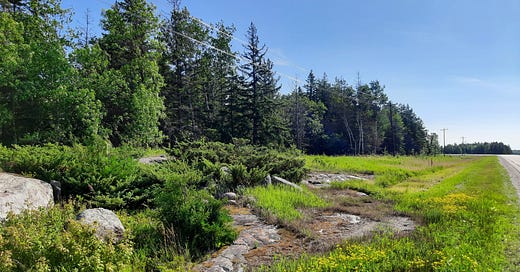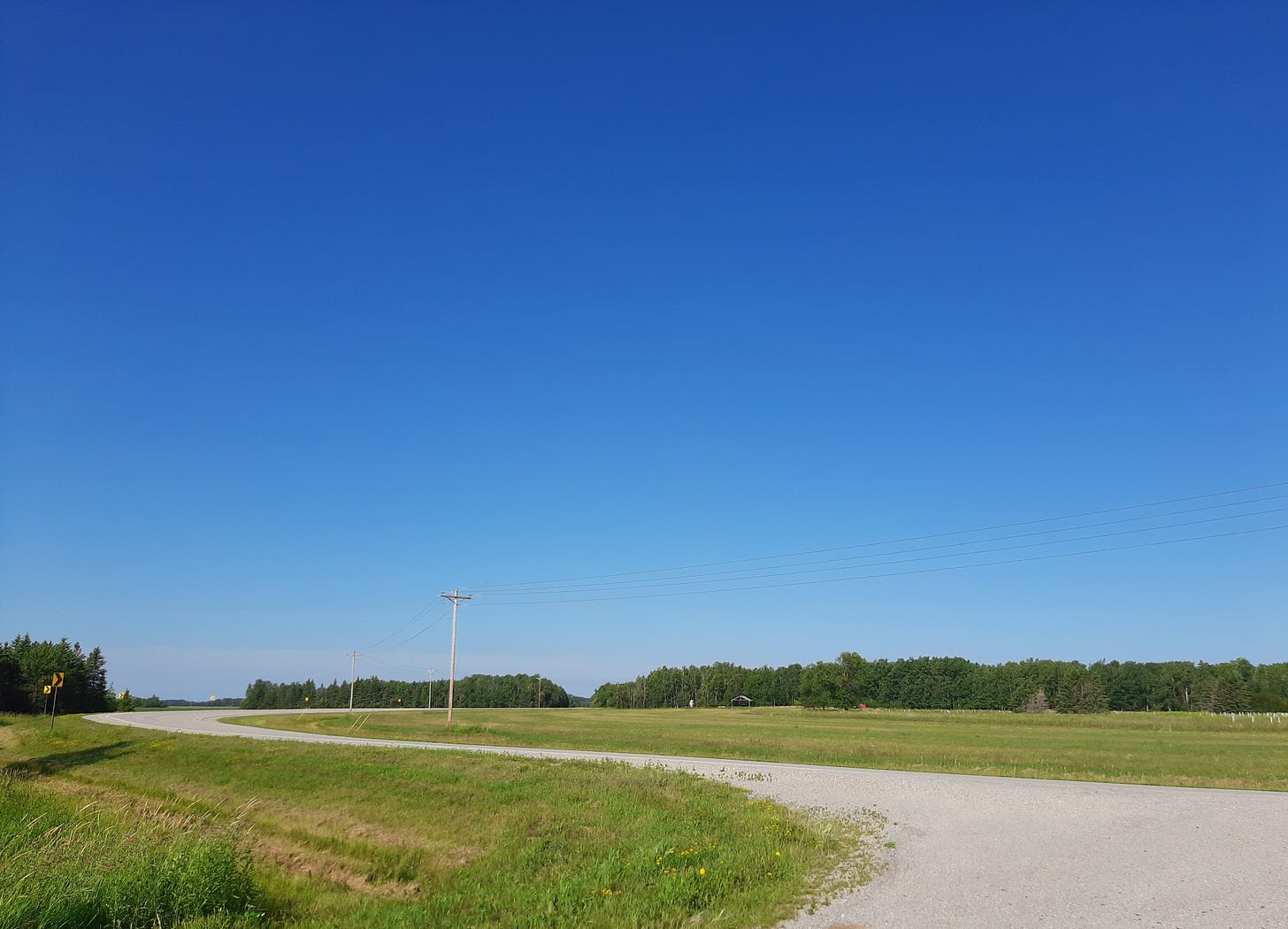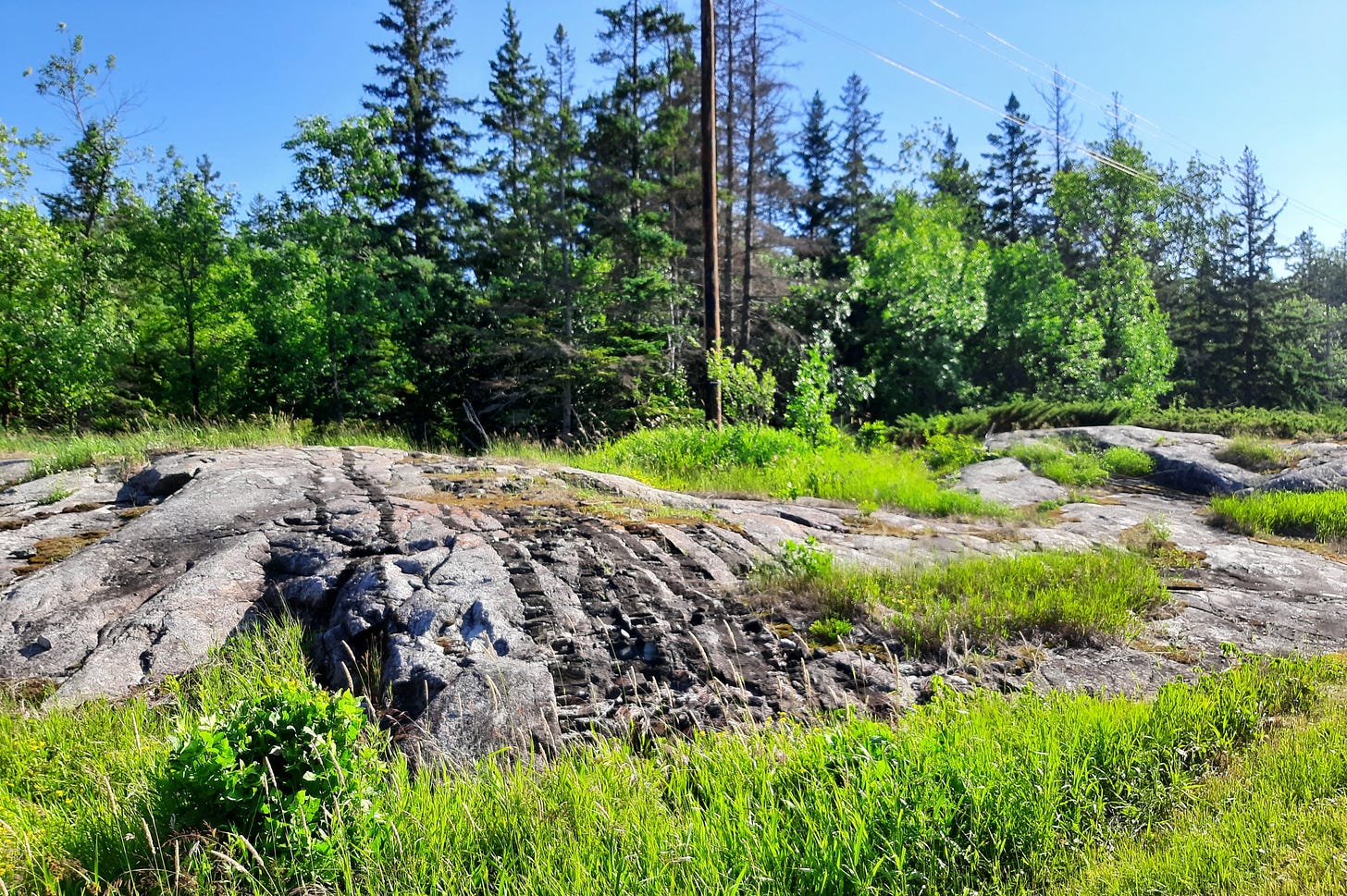I returned this week to Lake of the Woods County where my maternal great-grandparents Charlie and Ellen Kling homesteaded on what had been Red Lake Indian Reservation land.
I returned to what had once been the Kling farm on Rocky Point Road about 20 miles east of Warroad and pulled over on the southern edge of the property, where there is this rock outcropping.
Today, this place is in Lake of the Woods County. Back in 1903 when the Klings first arrived, the land had been in Beltrami County. There was no Lake of the Woods County until 1922.
Rocky Point Road runs halfway up the dotted red-and-white county line on the map before the road turns due east a quarter section and then turns north to Arnesen’s Rocky Point. Where the Klings farmed is bordered by Rocky Point Road on the south and the east.
The peatland here was formed on the ancient lakebed of Lake Agazziz, which retreated with the Laurentide Ice Sheet at least 10,000 years ago. The exposed bedrock along the southern edge of the farm is a reminder of the Ice Age. A reminder that the past doesn’t go anywhere. It’s right under my feet.
I stand on this outcropping because it connects me to my ancestors. Mom told me she played here as a little girl with her sisters. Growing up during the Depression, she said they played with pinecones, feathers, lichen, and moss in games of make-believe. I imagine ten thousand years of children playing here on this same bedrock and hope for ten thousand more.
It’s difficult to imagine how hard my great-grandparents worked to turn this quarter section into farm land. First, they cleared it of timber, then plowed it with oxen, and eventually harvested grains by hand with a scythe.
They worked hard, but they didn’t live long.
Charlie Kling died at the age of 49, on October 31, 1925. He spent twenty years working the farm. And Ellen Kling, my great-grandmother, died at the age of 63 in 1941.
They are buried about six miles south of their homestead in Roosevelt, Minnesota, on the Roseau side of the county line in the cemetery known as “Silent City.”
Roosevelt, Minnesota, today has a population of 153 residents. Silent City has 664. Two of them are my great-grandparents. Here is their headstone.
Touching their headstone and standing on that bedrock brought me back to this special place they once called home.











Your grandparents had a hard life. I like this line:I imagine ten thousand years of children playing here on this same bedrock and hope for ten thousand more.
A fine piece that captures the challenges of living on Lake of the Woods. If you get a chance go to the Catholic cemetery and Riverside cemetery south of Warroad to see the Johnston ancestors. The fact the family is split in different cemeteries says something about the history.